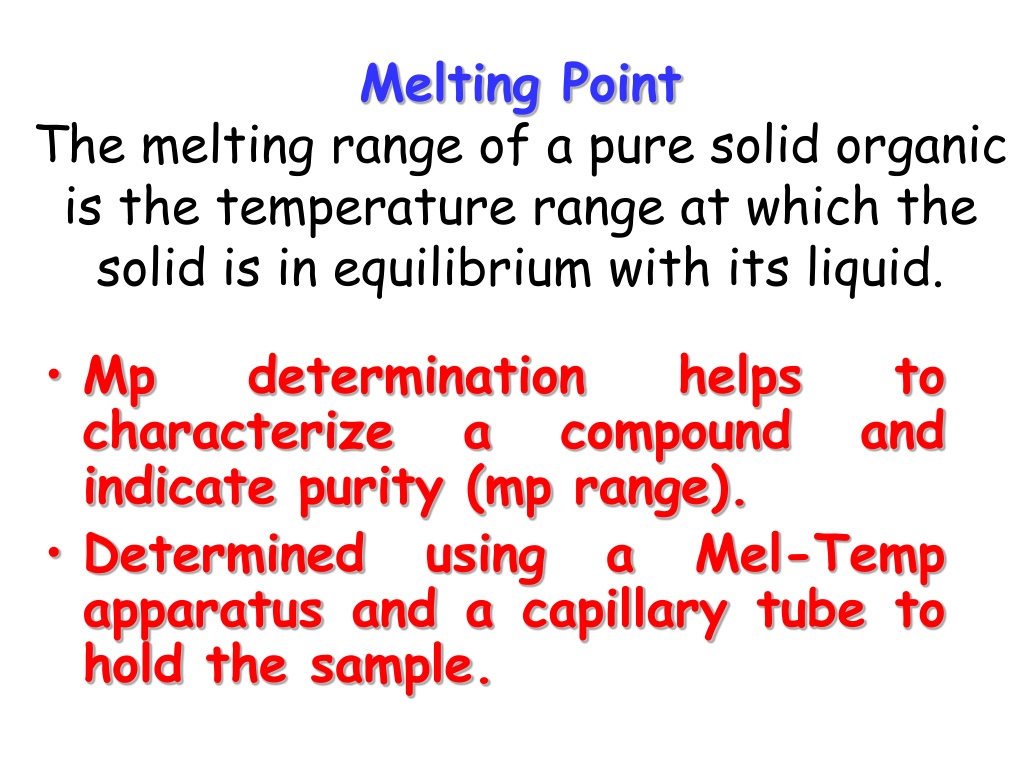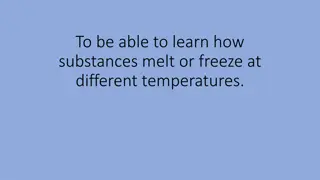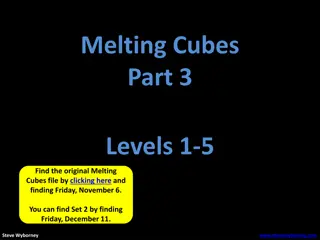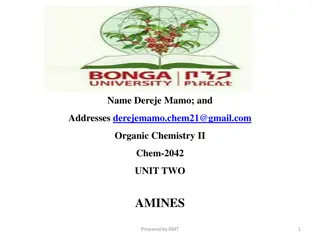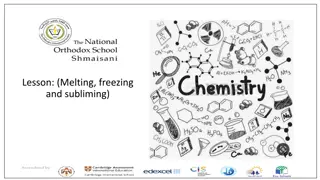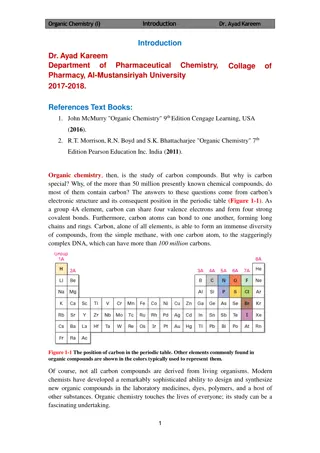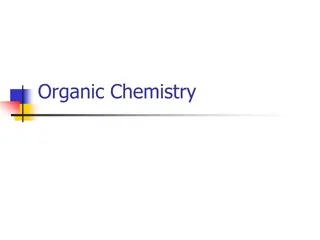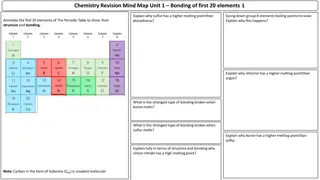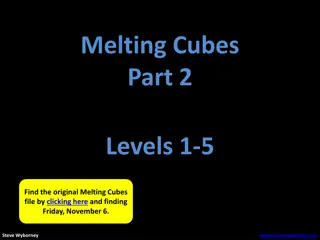Understanding Melting Points in Organic Chemistry
Melting points play a crucial role in identifying compounds and assessing their purity. The melting range of a pure solid organic compound indicates its equilibrium temperature with its liquid form. Impurities can lower the melting point, causing depression and broadening of the melting range. Mixed melting points are used to determine the identity of compounds by comparing observed ranges with known substances. This process helps in differentiating between pure and contaminated samples. Various methods, such as using a Mel-Temp apparatus and capillary tubes, aid in accurate determination and analysis of melting points.
Download Presentation

Please find below an Image/Link to download the presentation.
The content on the website is provided AS IS for your information and personal use only. It may not be sold, licensed, or shared on other websites without obtaining consent from the author. Download presentation by click this link. If you encounter any issues during the download, it is possible that the publisher has removed the file from their server.
E N D
Presentation Transcript
Melting Point The melting range of a pure solid organic is the temperature range at which the solid is in equilibrium with its liquid. Mp characterize indicate purity (mp range). Determined apparatus and a capillary tube to hold the sample. determination helps to a compound and using a Mel-Temp
Melting Point Identification of an unknown sample (compare it s observed melting range with that of known compounds). Physical property used for identification Assessment of sample purity for a known substance. By comparing observed range for an actual sample to the known range for a pure sample, you can tell whether your actual sample is pure or contaminated (the range is depressed and broadened) Pure compounds melt within a 1-2 degree range
Impurities lower melting point: takes less energy to disrupt crystal lattice when impurities are present Melting range depression (melting point will be lower) Melting range broadening (melting point will be broader)
Miscellaneous notes on melting range depression/broadening: 1. Only soluble impurities cause depression and broadening. 2. At the chemical level, it is impossible to raise the melting point of an already pure substance. 3. Often contaminated solids are purified by recrystallization. 4. When crystals are isolated by filtration from a solvent, it is important to allow complete drying/evaporation of the solvent in order to get a good melting range. 5. When two chemicals are mixed, the resulting melting point is not the average of the two mp s. It is always depressed from the melting point of the major component in the mixture.
Melting Point Mixed Melting Point - used to determine identity of compound: Have unknown compound that melts at 133-135. What is the unknown? How could you tell? Urea MP 133-135 Cinnamic acid MP 133-134
Mixed Melting Point Mix unknown compound with a little urea and measure melting point + unknown sample If melting point is still 133-135 degrees, unknown compound was urea:
Mixed Melting Point Mix unknown compound with a little urea and measure melting point + unknown sample If melting point is lower and broader, i.e. 127-132, unknown compound was NOT urea:
SAMPLE SIZE The smaller sample is probably too small to properly observe the mp range.The larger sample may be too large, resulting in a mp range that is too wide and possibly high.The middle sample is about right but it is near the maximum size that should be used.Note that it is firmly packed.
WHAT YOU MAY SEE THIS IS A SAMPLE OF IBUPROFEN ISOLATED FROM COMMERCIAL TABLETS. TINY DROPLETS APPEAR AT THE START OF THE MELTING POINT RANGE. OFTEN THE SAMPLE APPEARS TO SHRINK AWAY FROM THE SIDES OF THE TUBE. HERE, AS SHOWN IN THE INSET (YELLOW BOX), THE SAMPLE HAS STARTED TO MELT JUST ABOVE 72 . AS THE TEMPERATURE RISES TO 73 THE LIQUID PHASE BECOMES CLEARLY VISIBLE.
Part A. Melting Point Procedure 1. Do calibration of the thermometer using different organic compounds. Compound mp Phenylsalicylate 42.5 Azobencene 67.5 Glutaric acid 97.0 Benzoic acid 121.5 O-iodobenzoic acid 161.0 Hippuric acid 189.5 P-hydroxybenzoic acid 215.5 253.0 P-bromobenzoic acid 2.Repeat the procedure with unknowns
Melting Points Tightly pack 2-3 mm of sample into a capillary by tapping a capillary. If the mp is known, the apparatus can be heated rapidly to within 20 C before slowing the rate 1 C/minute. Melting process begins when the first liquid drops are observed and ends when the last trace of solid melts. Make a table for Temperature Correction (page 1-7) Plot the results in the graph Correction vs T of heating to
Part B. Determine the melting points of unknowns using the mix melting technique Do one fast determination to get rough approximation of melting point Do next one slower: Go quickly to 10-15 degrees away from melting point, then lower setting. Record temperature at which solid first starts to melt Record temperature at which all solid is melted Report the range Do the correction to the measurement
